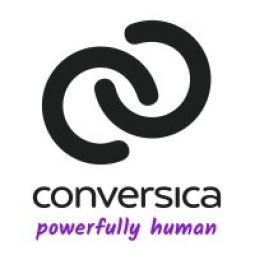技术
- 分析与建模 - 机器学习
- 基础设施即服务 (IaaS) - 虚拟私有云
适用行业
- 医疗保健和医院
- 零售
适用功能
- 销售与市场营销
用例
- 对话机器人
- 智能包装
关于客户
Sutter Shared Services (S3) 是一家为全国医生团体和卫生系统提供健康管理和行政服务的提供商。他们的服务面向大型医疗保健提供商,这些提供商要么希望建立自己的联络中心,要么通过提供下班后应答服务和诊所访问来增强患者体验。 S3 受益于多年来为外部团体以及 Sutter Health 内部团体提供和完善这些服务的经验。然而,他们在利用贸易展览、网络研讨会和兴趣推广产生的大量潜在客户方面面临挑战。
挑战
萨特共享服务 (S3) 为全国的医生团体和卫生系统提供健康管理和行政服务。他们的目标受众包括想要建立自己的联络中心的大型医疗保健提供商,以及希望通过提供下班后应答服务和诊所访问来增强患者体验的提供商。然而,由于贸易展览、网络研讨会和兴趣拓展带来的潜在客户数量稳定,S3 业务开发团队几乎不可能与每一个潜在客户进行接触。该团队最初尝试了传统的销售模式,即雇用业务开发代表来处理传入的潜在客户,但预算现实阻止了团队以满足需求所需的速度增长。
解决方案
为了改善和简化外展工作,S3 业务开发团队采用了 Conversica 的销售人工智能助手。 Conversica 在 S3 中的主要用例是围绕 S3 业务开发团队每年参加的许多贸易展览进行活动前和活动后的推广。 S3 业务开发团队使用 iPad 在展位上捕获与会者的联系信息,参观者可以在展位上玩游戏赢取奖品、接受礼物或以其他方式分享他们的信息。自动化将此数据添加到 Salesforce 中,以便可以发送首次接触的电子邮件,然后 Conversica 处理其余的事情。 S3 业务开发团队使用 Conversica 的 AI 助手“Amber”。作为智能虚拟助理,Amber 永远不会疲倦,永远不会请病假,并且拥有近乎无限的潜在客户外展能力。这使得 Amber 和其他智能虚拟助手成为那些需要将时间和资源花在更有价值或更复杂的任务上的人们的完美虚拟同事。
运营影响
数量效益

Case Study missing?
Start adding your own!
Register with your work email and create a new case study profile for your business.
相关案例.

Case Study
Hospital Inventory Management
The hospital supply chain team is responsible for ensuring that the right medical supplies are readily available to clinicians when and where needed, and to do so in the most efficient manner possible. However, many of the systems and processes in use at the cancer center for supply chain management were not best suited to support these goals. Barcoding technology, a commonly used method for inventory management of medical supplies, is labor intensive, time consuming, does not provide real-time visibility into inventory levels and can be prone to error. Consequently, the lack of accurate and real-time visibility into inventory levels across multiple supply rooms in multiple hospital facilities creates additional inefficiency in the system causing over-ordering, hoarding, and wasted supplies. Other sources of waste and cost were also identified as candidates for improvement. Existing systems and processes did not provide adequate security for high-cost inventory within the hospital, which was another driver of cost. A lack of visibility into expiration dates for supplies resulted in supplies being wasted due to past expiry dates. Storage of supplies was also a key consideration given the location of the cancer center’s facilities in a dense urban setting, where space is always at a premium. In order to address the challenges outlined above, the hospital sought a solution that would provide real-time inventory information with high levels of accuracy, reduce the level of manual effort required and enable data driven decision making to ensure that the right supplies were readily available to clinicians in the right location at the right time.

Case Study
Improving Production Line Efficiency with Ethernet Micro RTU Controller
Moxa was asked to provide a connectivity solution for one of the world's leading cosmetics companies. This multinational corporation, with retail presence in 130 countries, 23 global braches, and over 66,000 employees, sought to improve the efficiency of their production process by migrating from manual monitoring to an automatic productivity monitoring system. The production line was being monitored by ABB Real-TPI, a factory information system that offers data collection and analysis to improve plant efficiency. Due to software limitations, the customer needed an OPC server and a corresponding I/O solution to collect data from additional sensor devices for the Real-TPI system. The goal is to enable the factory information system to more thoroughly collect data from every corner of the production line. This will improve its ability to measure Overall Equipment Effectiveness (OEE) and translate into increased production efficiencies. System Requirements • Instant status updates while still consuming minimal bandwidth to relieve strain on limited factory networks • Interoperable with ABB Real-TPI • Small form factor appropriate for deployment where space is scarce • Remote software management and configuration to simplify operations

Case Study
Gas Pipeline Monitoring System for Hospitals
This system integrator focuses on providing centralized gas pipeline monitoring systems for hospitals. The service they provide makes it possible for hospitals to reduce both maintenance and labor costs. Since hospitals may not have an existing network suitable for this type of system, GPRS communication provides an easy and ready-to-use solution for remote, distributed monitoring systems System Requirements - GPRS communication - Seamless connection with SCADA software - Simple, front-end control capability - Expandable I/O channels - Combine AI, DI, and DO channels

Case Study
Digital Retail Security Solutions
Sennco wanted to help its retail customers increase sales and profits by developing an innovative alarm system as opposed to conventional connected alarms that are permanently tethered to display products. These traditional security systems were cumbersome and intrusive to the customer shopping experience. Additionally, they provided no useful data or analytics.









